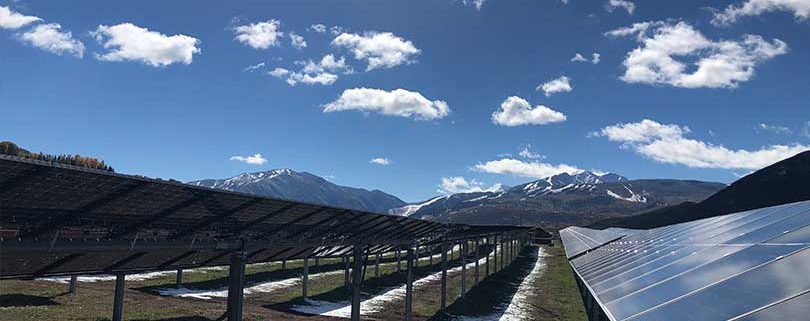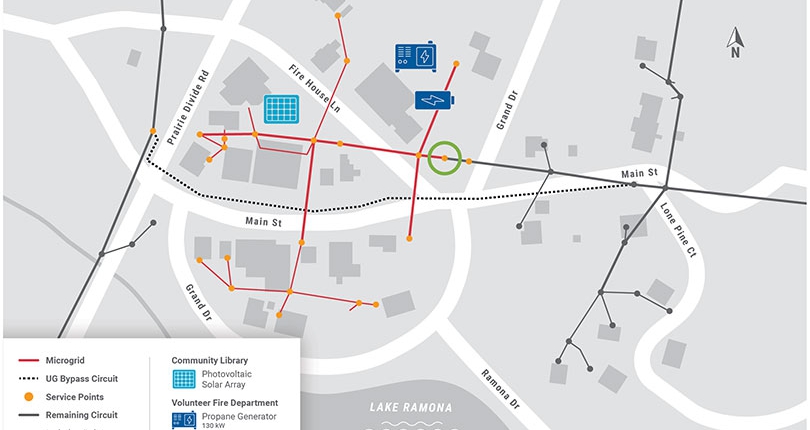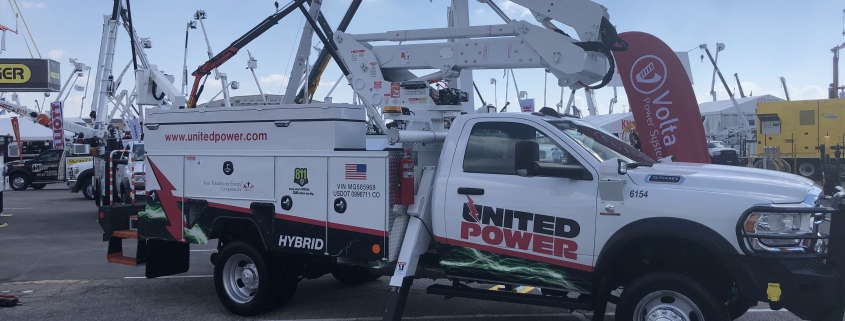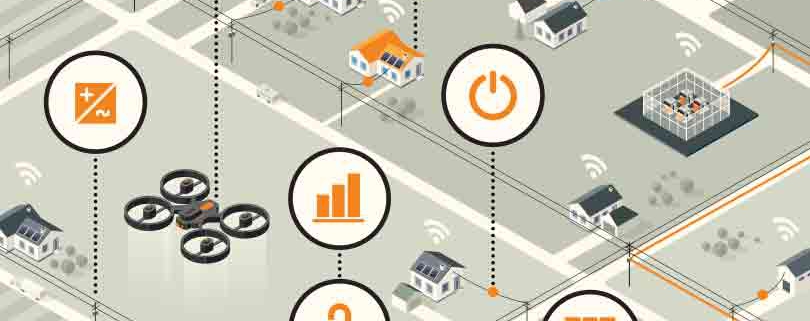New devices change one-way grid to multi-directional network
By Reed Karaim and Mona Neeley
It wasn’t long ago that the U.S. power grid resembled a relatively simple one-way street, with power flowing from central generating plants through transmission lines to distribution systems and, finally, to the customer.
But this is no longer the case.
Central-station power continues to play a vital role, but it’s increasingly complemented by distributed energy resources (DER). DER refers to often-smaller generation units that are located on the consumer’s side of the meter. Some examples of DER are: rooftop solar photovoltaic units, wind-generating units and home battery banks. It is these types of DERs that are turning the grid into not just a two-way street, but more of a neighborhood of two-way streets, with electricity moving in and out from locations big and small throughout the day. And let’s not stop there. Microgrids, capable of operating independently, are also part of the mix too.
“It’s all leading to a grid that’s a mesh rather than a single hierarchal entity,” says Craig Miller, former National Rural Electric Cooperative Association chief scientist.
The unstoppable evolution of the U.S. power grid is compelling electric cooperatives to examine which technologies and strategies will help ensure that their systems keep pace.
Most experts agree that central-station generation—fueled by coal, natural gas, hydro, nuclear or utility-scale solar and wind—will remain the core of the system for the foreseeable future. However, DER is expanding rapidly.
Whether it’s behind-the-meter or utility-scale solar and wind, renewable energy is the fastest growing segment of the United States’ electric portfolio. The Energy Information Administration foresees it trailing only natural gas in total electricity output by 2026.
Demand response and energy storage technologies are expected to play a significant role. Energy storage deployments in the U.S. grew by 232% from 2018 to 2019 alone, according to an analysis by Wood Mackenzie, with nearly half coming from the energy user’s side of the meter, including business and home battery systems and electric vehicles.
“As the grid has evolved, our generation is moving to small chunks, and so the grid itself isn’t as inherently stable,” Miller says. “It has to be increasingly actively managed.”
Managing the grid, both at the transmission and the distribution level, in the midst of this change requires rapid two-way communication, a massive increase in data analytical capability, and sophisticated solid-state control technology.
“The challenge is now to pull all of the information together: what the state of the grid is, what controls we can implement, what decisions are optimum,” Miller says. “It’s about deriving value from the new control technology. It’s the synchronization, utilization and coordination of everything that’s happening to get the best of this new agile grid.”
There are several new technologies that will enable this future grid. Here are seven of them available now that will be important in expanding a multi-directional grid and in helping electric co-ops meet shifting consumer expectations in this future energy landscape.
1. Advanced Inverters
If any DER is to feed electricity to a home, business or the grid, that power must first be converted from DC to AC. This is the task of standard inverters, which are relatively simple devices that for decades have been used to integrate solar arrays and batteries.
“Advanced” inverters, which are included on most new DER installations, go even further by providing benefits such as communication capabilities, sophisticated monitoring and control functions, and autonomous operation.
2. Broadband
Electric cooperatives recognize that two-way communications are fundamental to making use of smart grid technologies. Faster and higher-capacity backbone networks will be needed more than ever in the future.
Higher-bandwidth, lower-latency communications systems allow broader and deeper use of existing smart-grid components, enabling both the movement of large amounts of data and more precise control over downline devices. New grid functions will also be increasingly dependent on the highest-quality communication platforms.
3. Data Analytics
Electric co-ops have used analytical tools for years, but those tools are growing in capability and are spreading, notes David Pinney, NRECA analytics program manager. Data analytics can help utilities manage DER, forecast and curb peak load, improve power flow planning and reduce line loss, among other functions.
4. Sensors
A new generation of sensors is also transforming the ability of electric cooperatives to detect what is happening on their systems. Intelligent line sensors that can pinpoint faults and provide information on circuit performance can present a more granular view of the distribution grid. Combined with substation sensors and advanced metering infrastructure systems, these ubiquitous devices are adding to the data revolution that’s transforming utility operations.
5. Power Electronics
Power electronics, which can include silicon-chip microprocessors with advanced control capabilities, are already improving the reliability and stability of transmission and distribution systems.
“I like to say that silicon is the new copper,” Miller says. “It’s becoming that important. There’s a lot of silicon out there making decisions on the grid.”
6. Interoperability
The diversity of DER — from solar arrays and gas-fired peaking plants to aggregated water heaters and home battery banks — means an increasing number of resources need to be integrated with utility operations, which cannot happen without seamless communication.
“Having diverse generation sources is a desirable thing, but without the ability to communicate and manage those resources, their value to the grid will be minimal,” says Venkat Banunarayanan, NRECA’s senior director for the integrated grid. “Interoperability is the key that unlocks all the potential of these DER technologies.”
For electric cooperatives, data about an energy resource, which could be located beyond the meter inside a home, and its operation must be readable and actionable by a supervisory control and data acquisition system (SCADA) at the distribution co-op. For behind-the-meter resources, interoperability details will be specified by the electric co-op in an interconnection agreement.
7. Interconnection Standards
Revised standards that the power industry is adopting to help deal with the growth of distributed energy resources on the grid marks a change in outlook and approach to integrating DER into the nation’s grid.
The changes will impact the interconnection of solar, wind and other distributed generation. Some of the most significant changes come in the “minimum trip” settings for DER, which have been loosened to allow a much greater variance in voltage and frequency.
Reed Karaim writes for the National Rural Electric Cooperative Association. Mona Neeley is the editor of Colorado Country Life magazine.

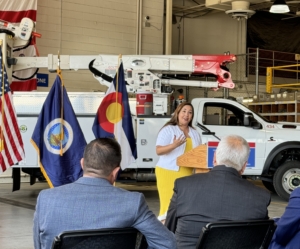
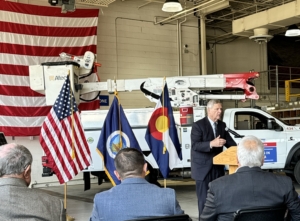
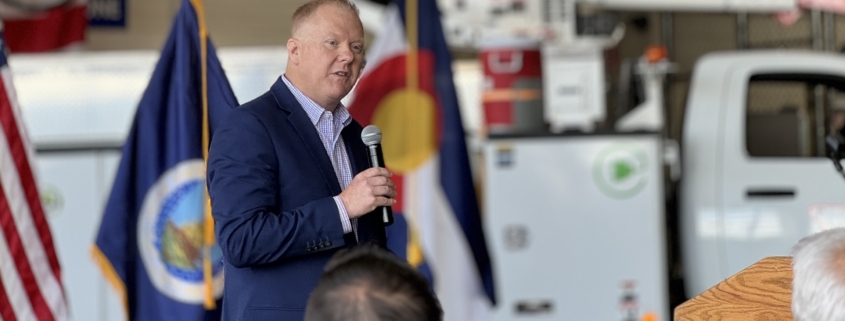 2024
2024 2023
2023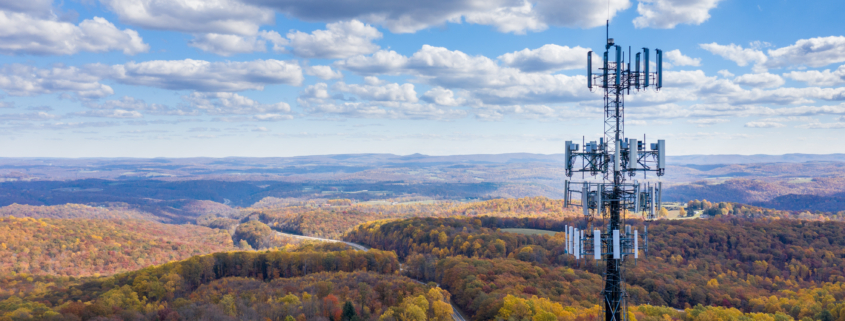 2023
2023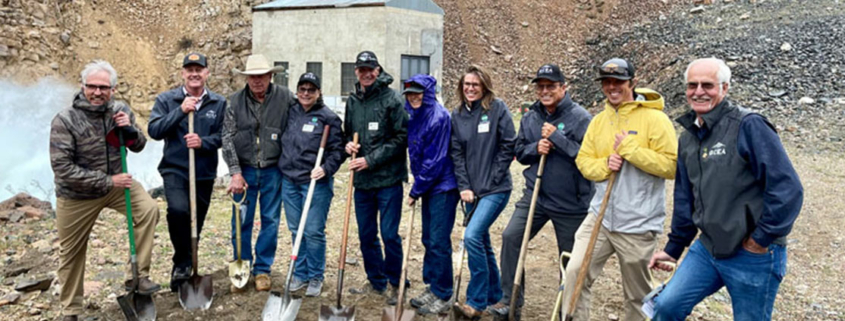 GCEA 2023
GCEA 2023